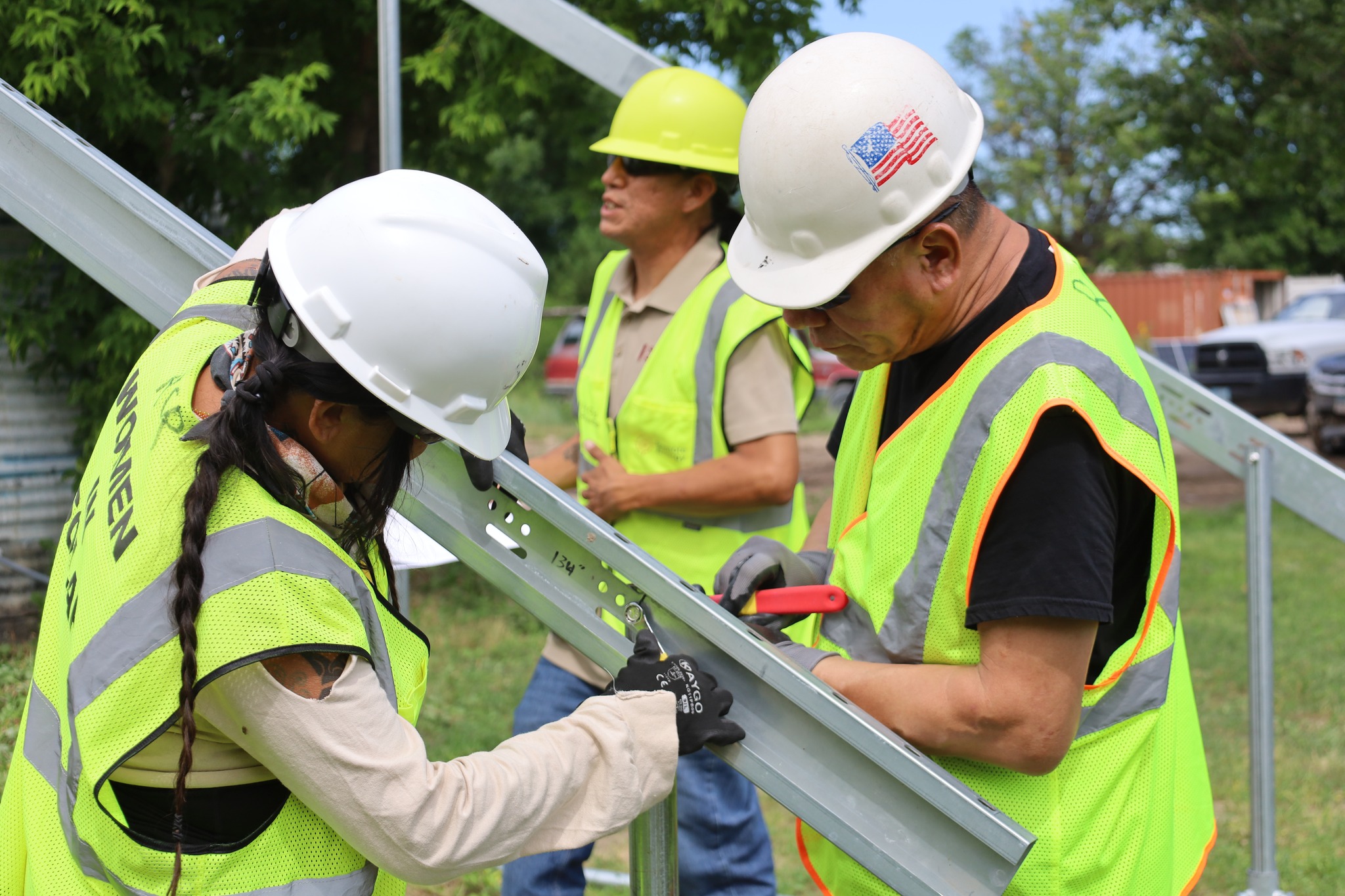
- Details
- By Chez Oxendine
- Economic Development
Tribes across the country are launching renewable energy workforce training programs, building their own capacity to install and maintain solar arrays, battery storage and wind projects to control their energy futures.
The strategic push reflects tribes’ focus on energy sovereignty through workforce development. By training their own people, tribes can reduce reliance on external contractors and ensure they have the skills needed for renewable energy projects now — and in the future.
The structure of these programs reflects an effort to anticipate future workforce needs. Large-scale renewable projects, from solar arrays to microgrids, require skilled labor not only for installation but for ongoing maintenance. Tribes investing in training now are positioning themselves to meet that demand internally.
On Aug. 18, for example, a new group of trainees will gather at Clackamas Community College in Portland, Ore. for the Native Clean Energy Workforce Initiative. The program, developed by the Northwest Native Chamber, will utilize training from energy nonprofit GRID Alternatives to introduce basic electrical concepts and construction fundamentals.
From there, they can move into longer-term certificate or degree programs in renewable energy technology. The program is designed to prepare Native and frontline community members for careers in clean energy while removing common barriers through paid stipends, tuition coverage and support services.
More than just a way to meet tribes’ needs, the training could help tribal members launch long careers in the sector, too.
The Native Chamber’s program is one of many. In Maine, the Penobscot, Passamaquoddy, Houlton Band of Maliseet and the Mi’kmaq have formed the Wabanaki Sustainable Energy team. After a needs analysis, the team worked with local partners to develop training for energy auditors and heat pump installers.
“The more we can do for ourselves, the better off we are — and that extends to energy,” said Kelsey Flores, coordinator for the Wabanaki Sustainable Energy team. “The overall goal is to feed into our resilience and our self-sufficiency.”
In Northern California, the Karuk, Yurok, Hoopa Valley and Blue Lake Rancheria have launched a paid pre-apprenticeship program for Native electricians. Developed in partnership with trade unions and modeled in part on the Meskwaki Nation’s Department of Labor-recognized program, it blends online learning with hands-on training.
Participants receive stipends, tools, safety certifications and career navigation support.
“We have renewable energy projects coming online, and we have tribal utility workers retiring,” said Heidi Moore-Guynup, Blue Lake Rancheria director of tribal and government affairs. “If we don’t act now, we’ll miss the opportunity to have our people in those positions.”
The Wabanaki program has already seen graduates move into union apprenticeships, start small businesses, and apply their training to reduce energy costs at home. In California, the pre-apprenticeship was designed to improve equity and ensure women and underrepresented groups have access to career paths in the trades.
These new programs build on momentum from recent years. Tribes like Leech Lake and the Spokane Tribe trained members through DOE-funded solar projects, while the Menominee and Red Lake Nation partnered with Native organizations to create solar workforce pipelines. The Oglala Lakota's BRIDGE program has trained Native women for renewable energy careers, with roughly 80% of graduates finding sector jobs within four months. Those earlier efforts laid the groundwork for today's broader training push.
The current workforce development push by tribes comes as federal support for clean energy projects is on the decline. The Environmental Protection Agency has terminated the three programs under the $27 billion Greenhouse Gas Reduction Fund, cutting off $2 billion in clean energy funding for Indian Country. Interior Secretary Doug Burgum now requires that he personally sign off on all solar and wind projects on federal lands, while the One Big Beautiful Bill Act has slashed tribal energy loan programs. And, as of last Friday, the Treasury has new energy tax credit rules that will affect dozens of tribal energy projects.
When an administration changes, so do the priorities. As the saying goes: elections have consequences.
But by building an internal energy workforce, tribes are preparing to reduce their reliance on both federal funding and external contractors. That insulates them from Washington’s policy whiplash every four years and positions them to control their own energy transitions.
The approach reflects centuries of hard-won experience: tribes that build their own capacity can move forward regardless of changes in federal policy or who’s in the White House.
